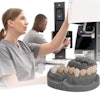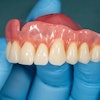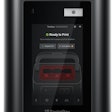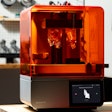The International Caries Detection and Assessment System (ICDAS) held its own in a comparison study of traditional and novel methods for occlusal caries detection (Lasers in Medical Science, July 6, 2012).
A team of Brazilian researchers compared ICDAS with radiographic exams and fluorescence-based methods. Two examiners assessed one occlusal site two times on each of 79 primary molars using ICDAS, bitewing radiography, Diagnodent (KaVo), Diagnodent Pen, and VistaProof fluorescence camera (Durr Dental; sold in the U.S. by Air Techniquesas Spectra). The teeth were then prepared histologically and assessed for caries extent.
At the D1 threshold (enamel and dentin lesions), ICDAS and VistaProof presented higher sensitivity values (0.75 and 0.73, respectively), while the bitewings showed higher specificity (1.00). At the D 2 threshold (inner enamel and dentin lesions), ICDAS presented higher sensitivity (0.83) and statistically significantly lower specificity (0.70). At the D3 threshold (dentin lesions), Diagnodent Pen and VistaProof showed higher sensitivity (1.00 and 0.91, respectively), while higher specificity was presented by VistaProof (0.95), ICDAS (0.94), bitewings (0.94), and Diagnodent (0.92).
"ICDAS and VistaProof exhibited better accuracy in detecting enamel and dentin caries lesions, whereas ICDAS, Diagnodent, Diagnodent Pen, and VistaProof were more appropriate for detecting dentin lesions on occlusal surfaces in primary teeth," the researchers concluded.



















